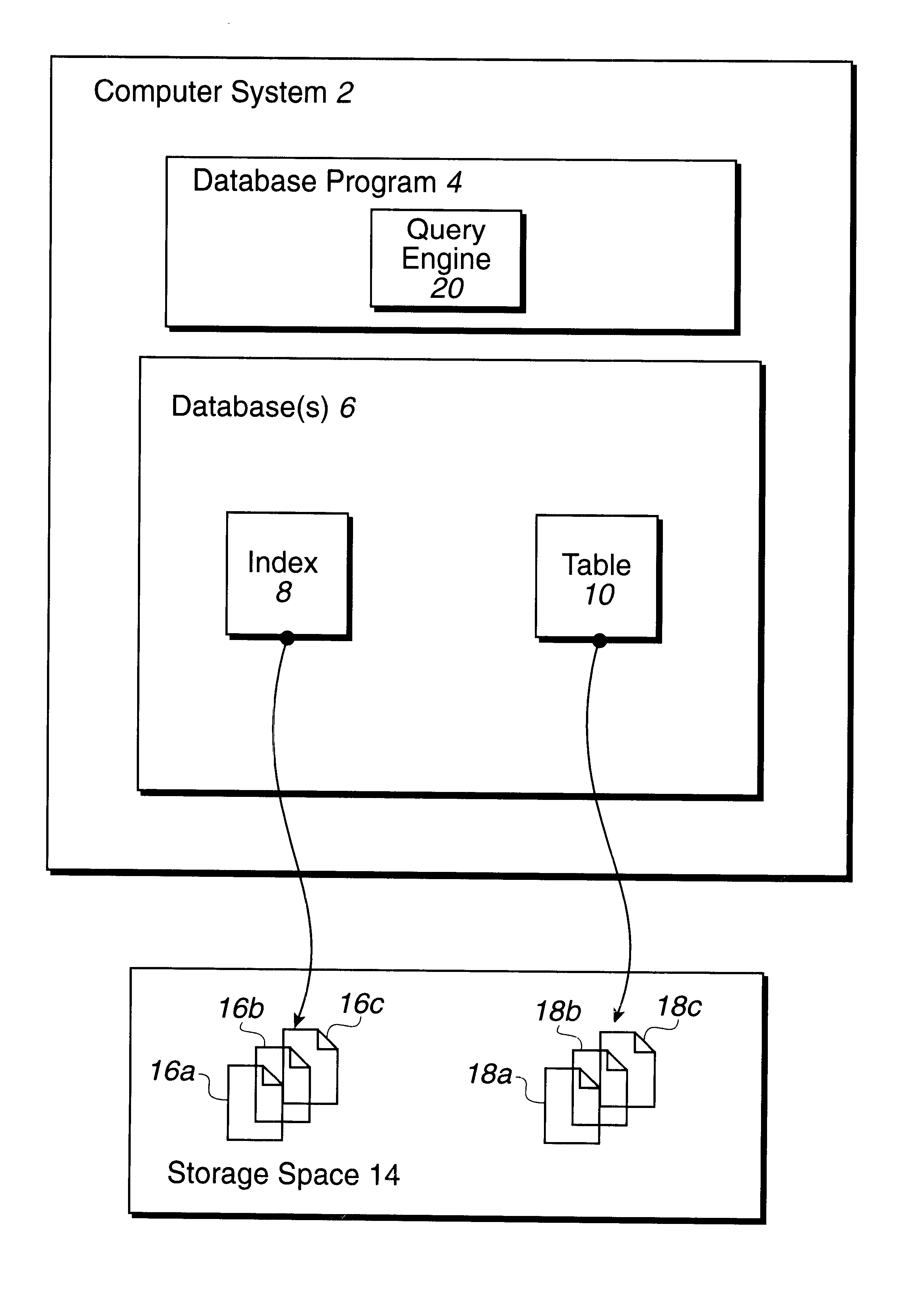Method, system, and program for a join operation on a multi-column table and satellite tables including duplicate values
a multi-column table and satellite table technology, applied in the field of method, system and program for performing a join operation on a multi-column table and satellite table including duplicate values, can solve the problems of inefficient above query technique using join operations, unnecessary search of actual tables, and needlessly consuming i/o operations to perform non-matching join operations
- Summary
- Abstract
- Description
- Claims
- Application Information
AI Technical Summary
Benefits of technology
Problems solved by technology
Method used
Image
Examples
Embodiment Construction
To overcome the limitations in the prior art described above, preferred embodiments disclose a method, system, and program for performing a join operation on a multi-column table and at least two satellite tables having a join condition. Each satellite table is comprised of multiple rows and at least one join column. The multi-column table is comprised of multiple rows and at least one column corresponding to the join column in each satellite table. A join operation is performed on the rows of the satellite tables to generate concatenated rows of the satellite tables. One of the concatenated rows is joined to the multi-column table and a returned entry from the multi-column table is received. A determination is then made as to whether the returned entry matches the search criteria. If so, a determination is made as to whether one of the satellite tables has duplicates of values in the join column of the returned matching entry or the multi-column table has duplicate entries in the j...
PUM
 Login to View More
Login to View More Abstract
Description
Claims
Application Information
 Login to View More
Login to View More - R&D
- Intellectual Property
- Life Sciences
- Materials
- Tech Scout
- Unparalleled Data Quality
- Higher Quality Content
- 60% Fewer Hallucinations
Browse by: Latest US Patents, China's latest patents, Technical Efficacy Thesaurus, Application Domain, Technology Topic, Popular Technical Reports.
© 2025 PatSnap. All rights reserved.Legal|Privacy policy|Modern Slavery Act Transparency Statement|Sitemap|About US| Contact US: help@patsnap.com



